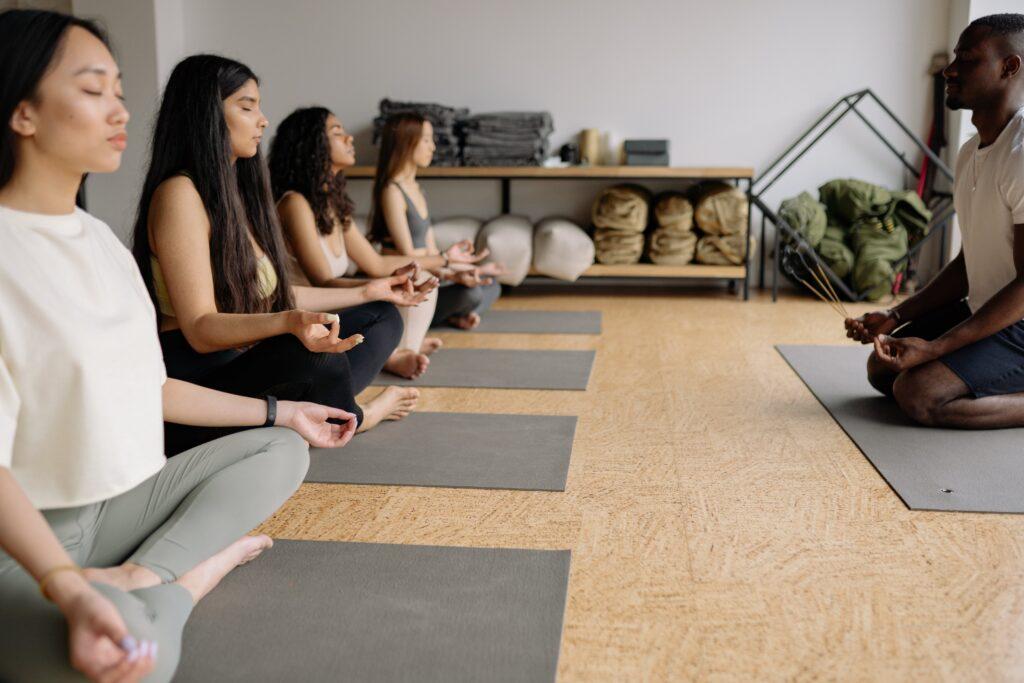I. Introduction
A. Understanding the significance of opening a yoga studio
Opening a yoga studio goes beyond just starting a business—it is about creating a space that promotes health, wellness, and spiritual growth. Yoga has gained immense popularity in recent years, and having a dedicated studio provides a haven for individuals to practice and connect with like-minded individuals. It offers a unique opportunity to create a community focused on mindfulness and self-care.
B. Overview of the process and benefits
This article will guide you through the process of opening a yoga studio, from initial planning to day-to-day operations. By following these steps, you can create a space that not only serves as a business venture but also enriches the lives of individuals who seek balance, tranquility, and physical fitness through yoga.
II. Planning and Preparation
A. Defining your vision and objectives
Before embarking on the journey of opening a yoga studio, it is important to have a clear vision and objectives. Determine the type of yoga you want to offer, the target audience, and the unique selling points of your studio. This step sets the foundation for a successful business.
B. Conducting market research and assessing competition

Thorough market research helps identify the demand for yoga in your area and enables you to assess the competition. Analyze the existing yoga studios and their offerings, and identify any gaps in the market that you can fill. Understanding the market landscape is crucial for positioning your studio effectively.
C. Choosing a suitable location
Choosing the right location is essential for the success of your yoga studio. Look for areas with a demographic that aligns with your target audience. Consider factors such as accessibility, foot traffic, parking facilities, and proximity to complementary businesses like health food stores or wellness centers.
D. Creating a business plan
A well-defined business plan provides a roadmap for your yoga studio’s success. Outline your studio’s mission, goals, target market, marketing strategies, financial projections, and operational details. A comprehensive business plan not only helps secure funding but also serves as a reference point throughout your entrepreneurial journey.
E. Obtaining necessary permits and licenses

Check the local regulations and obtain the necessary permits and licenses required to operate a yoga studio. This may include zoning permits, liability insurance, health department approvals, and business licenses. Compliance with legal requirements ensures a smooth and hassle-free operation.
III. Studio Setup and Design
A. Creating a welcoming and calming space
Design your yoga studio to create a welcoming and calming ambiance. Opt for a neutral color scheme that promotes relaxation. Consider incorporating elements of nature, such as plants or water features, to enhance the soothing atmosphere.
B. Choosing the right flooring and lighting
Select flooring that is suitable for yoga practice, such as cork, bamboo, or hardwood. Ensure the lighting is adjustable to create different moods for various classes. Incorporate natural light whenever possible to create a connection with the outdoors.
C. Selecting appropriate furniture and equipment
Invest in high-quality yoga props and equipment, such as mats, bolsters, blocks, straps, and blankets. Provide comfortable seating areas for clients to relax before or after class. Choose furniture and storage solutions that are functional, aesthetically pleasing, and align with your studio’s style.
D. Incorporating environmentally friendly elements
Yoga embodies a deep respect for the environment, so consider implementing eco-friendly practices in your studio. Use sustainable materials, energy-efficient lighting, and recyclable props and supplies. Encourage clients to bring their own water bottles and offer filtered water stations instead of single-use plastic bottles.
IV. Staffing and Hiring

A. Determining the required staff positions
When opening a yoga studio, it is essential to identify the necessary staff positions to ensure smooth operations. These positions may include:
- Yoga instructors – These individuals are the backbone of your studio and should be experienced, certified, and passionate about teaching yoga.
- Front desk receptionist – This staff member will handle customer inquiries, class registrations, and administrative tasks.
- Studio manager – Responsible for overseeing day-to-day operations, managing staff, and ensuring the studio runs efficiently.
- Marketing coordinator – This position focuses on promoting the studio, developing marketing campaigns, and managing online presence.
B. Hiring qualified yoga instructors
Hiring qualified yoga instructors is crucial for the success and reputation of your yoga studio. Consider the following steps when recruiting yoga instructors:
- Clearly define the expectations and values of your studio to attract candidates who align with your vision.
- Advertise job openings on relevant platforms, such as yoga teacher training programs, yoga job boards, and social media groups.
- Establish a thorough interview process to assess candidates’ qualifications, teaching style, and interpersonal skills.
- Request references from previous employers or students to get insight into the candidate’s teaching abilities and professionalism.
C. Recruiting administrative and support staff
In addition to yoga instructors, recruiting administrative and support staff is essential for the smooth functioning of your yoga studio. Consider the following roles:
- Front desk receptionist – Look for individuals with excellent communication skills, organizational abilities, and a friendly demeanor.
- Studio manager – Seek candidates with prior experience in yoga studio management or a background in business administration.
- Marketing coordinator – Look for individuals with marketing expertise, including digital marketing, social media management, and graphic design skills.
D. Conducting interviews and making hiring decisions
When conducting interviews for all staff positions, consider the following tips:
- Prepare a list of relevant interview questions that assess the candidate’s experience, skills, and alignment with the studio’s values.
- Organize practical assessments, such as teaching demonstrations or mock scenarios, to evaluate candidates’ abilities.
- Involve key stakeholders in the decision-making process to gather different perspectives and ensure a comprehensive evaluation.
- Always conduct thorough background checks and verify certifications to ensure the integrity of your team.
V. Marketing and Promotion

A. Building a strong brand identity
Establishing a strong brand identity will differentiate your yoga studio from competitors and attract your target audience. Consider the following steps:
- Define your brand’s values, mission, and unique selling propositions.
- Develop a visually appealing logo, colors, and brand guidelines that resonate with your studio’s vision.
- Create a powerful brand narrative and consistently communicate it across all marketing channels.
B. Creating a comprehensive marketing strategy
To effectively promote your yoga studio, develop a comprehensive marketing strategy encompassing various channels and tactics:
- Identify your target audience and develop buyer personas to understand their preferences and behaviors.
- Use a mix of online and offline marketing channels, such as digital advertising, print media, flyers, and local partnerships.
- Implement search engine optimization (SEO) techniques to improve your studio’s visibility in online searches.
Social media platforms are invaluable tools for connecting with your audience and promoting your yoga studio. Consider the following strategies:
- Create an active presence on platforms like Facebook, Instagram, and Twitter.
- Share regular, engaging content such as yoga tips, inspiring quotes, student testimonials, and updates on classes and events.
- Engage with your followers by responding to comments, messages, and inquiries promptly.
D. Collaborating with local businesses and influencers
Collaborating with local businesses and influencers can help increase brand awareness and attract new clients. Consider the following approaches:
- Seek partnerships with complementary businesses, such as wellness centers, gyms, or health food stores, for cross-promotion opportunities.
- Collaborate with local influencers, yoga teachers, or wellness bloggers to host special events or guest classes.
- Offer special promotions or packages exclusively for partner businesses’ customers.
A successful yoga studio should cater to different skill levels and demographics. Offering classes for beginners, intermediate, and advanced practitioners ensures that students can progress at their own pace. Additionally, considering the diverse demographics of the community, it is important to offer classes that cater to specific groups such as seniors, children, or pregnant women. This inclusivity will help create a welcoming and supportive environment for all.



